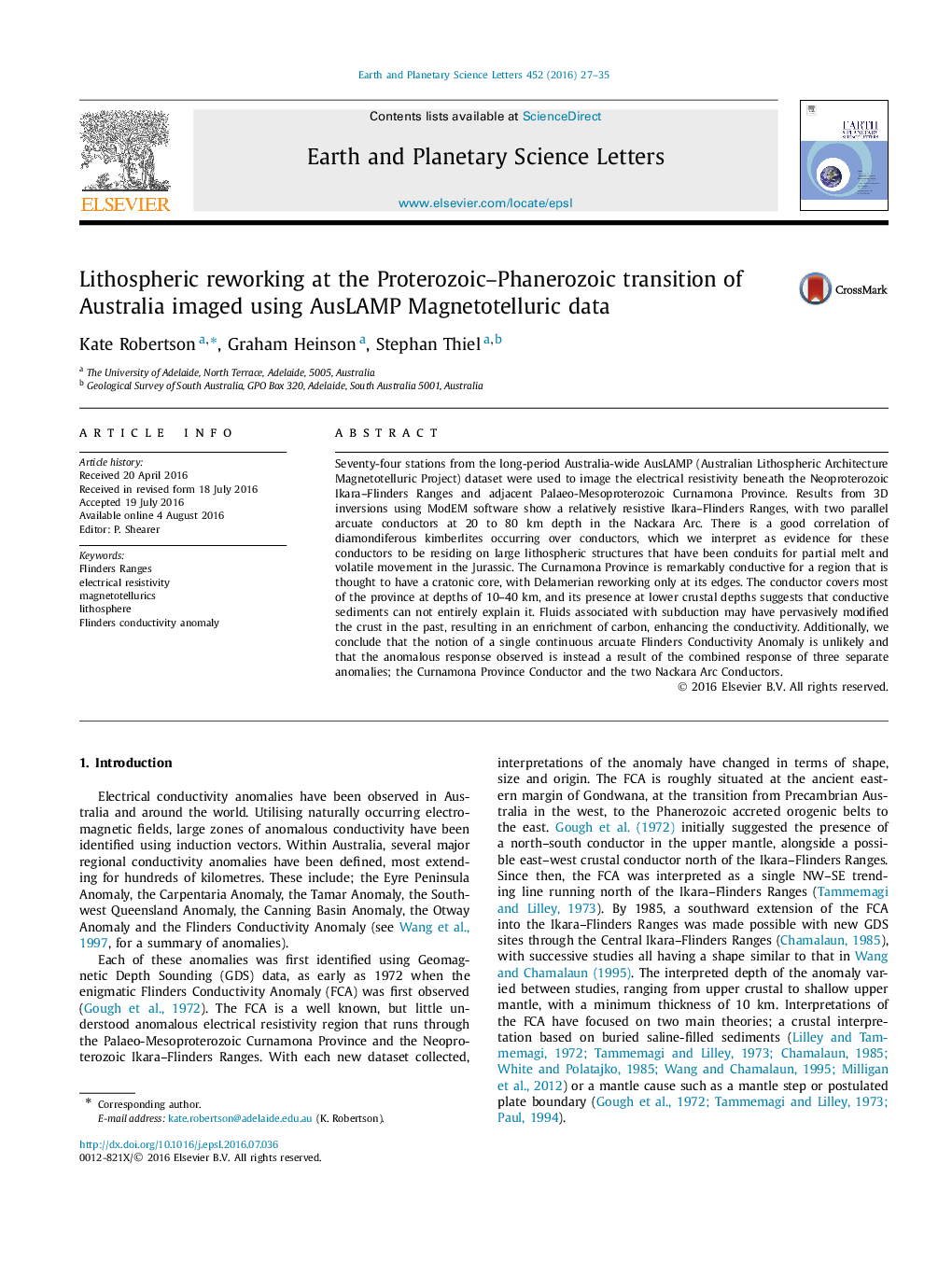| Article ID | Journal | Published Year | Pages | File Type |
|---|---|---|---|---|
| 6427091 | Earth and Planetary Science Letters | 2016 | 9 Pages |
â¢74 long-period magnetotelluric stations collected in South Australia.â¢3D inversion has imaged the Flinders Ranges and Curnamona Province lithosphere.â¢Ancient Curnamona Province unexpectedly has large crustal conductor.â¢Revisiting Flinders Conductivity Anomaly causes major reinterpretation.â¢Large conductors coincide with kimberlites, mapping fossil lithospheric paths.
Seventy-four stations from the long-period Australia-wide AusLAMP (Australian Lithospheric Architecture Magnetotelluric Project) dataset were used to image the electrical resistivity beneath the Neoproterozoic Ikara-Flinders Ranges and adjacent Palaeo-Mesoproterozoic Curnamona Province. Results from 3D inversions using ModEM software show a relatively resistive Ikara-Flinders Ranges, with two parallel arcuate conductors at 20 to 80 km depth in the Nackara Arc. There is a good correlation of diamondiferous kimberlites occurring over conductors, which we interpret as evidence for these conductors to be residing on large lithospheric structures that have been conduits for partial melt and volatile movement in the Jurassic. The Curnamona Province is remarkably conductive for a region that is thought to have a cratonic core, with Delamerian reworking only at its edges. The conductor covers most of the province at depths of 10-40 km, and its presence at lower crustal depths suggests that conductive sediments can not entirely explain it. Fluids associated with subduction may have pervasively modified the crust in the past, resulting in an enrichment of carbon, enhancing the conductivity. Additionally, we conclude that the notion of a single continuous arcuate Flinders Conductivity Anomaly is unlikely and that the anomalous response observed is instead a result of the combined response of three separate anomalies; the Curnamona Province Conductor and the two Nackara Arc Conductors.
